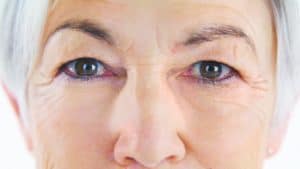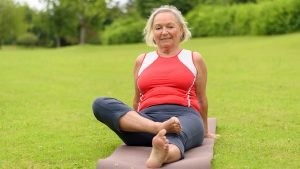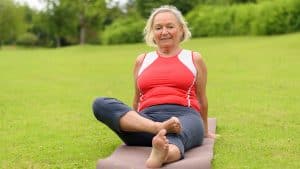3 Fabulous Makeup Tips for Crepey (aka Crinkly) Eyelids

If there was ever
a makeup dilemma that can make us scream out loud it’s crepey eyelids. Having
had my share of meltdowns while applying eyeshadow to dry, crepey lids, I have
some valuable ideas to navigate this problem.
Applying
eyeshadow to a crepey lid can be frustrating; however, there are some easy
solutions that start by taking care of your inner and external health.
I also have some
tricks with makeup that will make it much easier to manage. That being said, here
are my top four suggestions to navigating crepey eyelids like a savvy senior.
Treat Dryness and Improve
Health
What causes
crepey skin? Our skin becomes more crepey with the collagen loss that comes
with age. It is also enhanced by dehydrated and nutrient deprived skin and poor
health. In order to improve crepey skin, I recommend taking care of both your
inner and outer health with hydration and nutrients.
For example,
taking essential fatty acids like Omega 3 and 6 makes a huge difference in the
smoothness and suppleness of your skin. So does drinking plenty of spring water
and taking supplements that strengthen your immune system and overall physical
health.
The more nutrient
dense foods, skin care, and vitamins that you take, the greater improvement in
skin elasticity and plumpness you will find. Having said that, each body is
unique in its needs, and it’s up to all of us to develop a self-care strategy
that benefits our well-being to the highest degree.
As far as skin
care goes, I’d recommend getting an excellent serum. Serum is like a powerful
multivitamin for the face! If you’re going to spend money on a single product,
then I suggest buying an effective serum and using it all over your face and
around your eyes if the product allows.
I use Transdermal C
Serum by Truth Treatments, and it’s helped me enormously. Or, if you
like eye cream, try Bobbi Brown Extra
Repair Eye Cream and tap it all around your eye one to two
times a day.
Very Little Makeup
on the Eyelid
As you work on
your health and use your serum, you’ll notice a definite change in your skin
texture. As your skin improves, you can use more makeup products on the lid,
but in general, keep products like concealer, foundation, eye base, and powder
off the lid area.
When you put
products on crepey eyelids, they tend to look garish and not settle into the
skin as they normally would. As your skin improves, though, you should be able
to use all of the above items without difficulty.
Speaking as a
professional makeup artist, I generally use foundation on the lid to even out
the skin, and I use an eye base on oily lids to keep the powder eye shadows from
creasing.
On my own lids, I
use concealer to help cover my hyperpigmentation, but I don’t have oily lids so
it doesn’t crease up. A word of advice: keep powder and powder foundation off
dry skin as much as possible as it tends to set in those fine lines.
Avoid Shimmer
Shadows
I love a little
shimmer in my life. I love it on my jewelry and in my eyeshadows! Trouble is,
when my skin, or anyone’s skin, is dry or dehydrated, shimmer can look gaudy
and flaky. My advice in this instance is to either forego using frosted and
shimmery shadows for the time being or to use them sparingly.
For a wonderful
matte eyeshadow palette try Jane Iredale’s
Daytime Eyeshadow Palette. To apply shimmer strategically, using your
ring finger, dab a little iridescent shadow right in the center of your lid,
avoiding the crepey bits as much as possible. That way you get a little glamour
without looking overly made up.
Focus on Liner
If you have
crepey, hooded, or small lids, I suggest focusing on eye liner rather than
eyeshadow. It takes practice but learning how to apply eyeliner can change your
entire look and make you feel like a rock star. And who doesn’t want that?
For a detailed
tutorial on how to apply eye liner, click here. If you’re looking for guidance on
hooded lids, then watch my video on how to make hooded eyes pop.
In short, apply liner
mainly to the upper eye as opposed to under the eye, and blend well to remove
any sharp lines. Also, chose a complementary eyeliner shade that enhances your
eye color.
For example,
blue-eyes come alive with blue-gray, lavender, or warm browns. Do you have
green eyes? Try grape, bronze, or purple liner. For you brown-eyed beauties, go
for charcoal, green, navy, or black for darker skin tones.
Hopefully, you’re
not like me having meltdowns over crepey eyelids. As I’ve aged, self-care has
taken a higher priority, and I’ve noticed a definite improvement not only in my
skin, but in my love and acceptance of my body.
Our skin can
bounce back from dryness and crepey-ness, and there are fabulous ways for a
savvy senior to apply makeup on crepey lids. I’d love to hear from you and any
thoughts, suggestions, or questions you might have.
What do you do
for your crepey lids? What has helped improve your skin? Please share in the
comments below!
Read More











